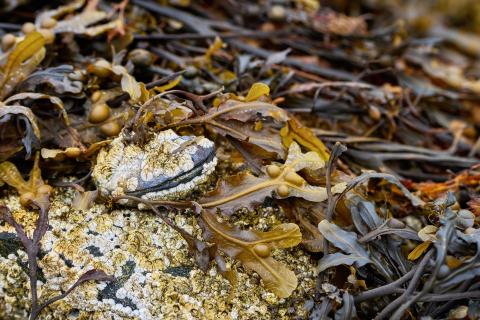
Many of us enjoy eating shellfish like oysters, clams and mussels—all bivalves.
But these bivalves are threatened by ocean acidification, a lowering of pH due to increasing CO2 in the ocean. The bivalve larvae have trouble growing in more acid seawater that can also erode shells.
A study at State University of New York, Stonybrook showed that growing kelp alongside bivalves helps keep the bivalves healthy and more abundant because the kelp takes up carbon dioxide in the ocean where both are growing. The work began in the lab, but the scientists have helped oyster farmers around New York get started growing kelp alongside oysters. Growing kelp doesn’t require energy or fertilization, so it’s not a burden on the shellfish farmers or the planet.
One scientist, Christopher Gobler, says, “And while showing that (success) in the lab was exciting, being able to improve the growth of oysters on an oyster farm experiencing coastal acidification proves this approach can have very broad applications.”
















